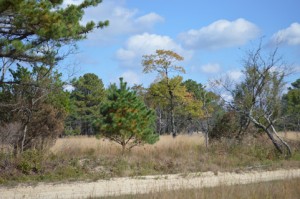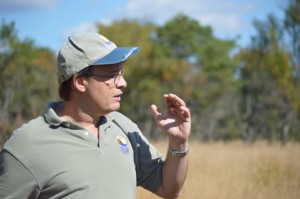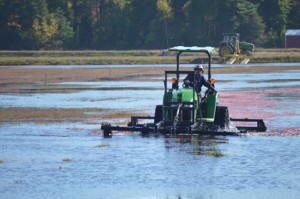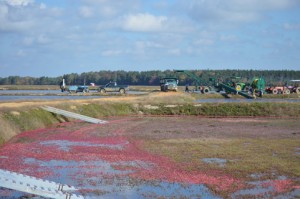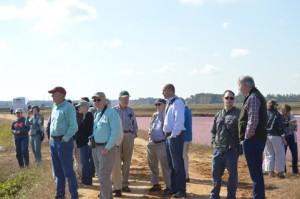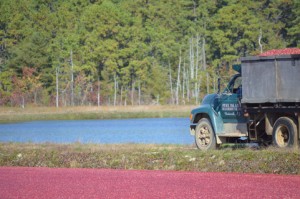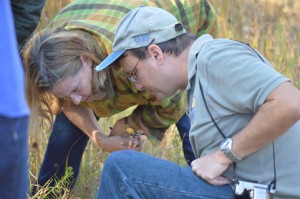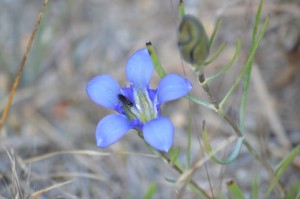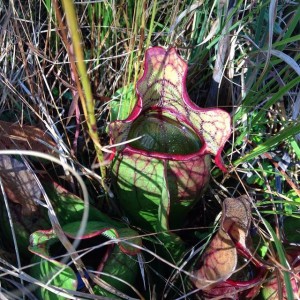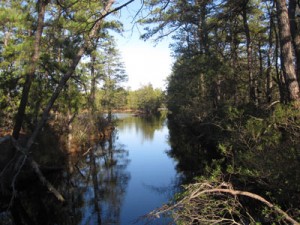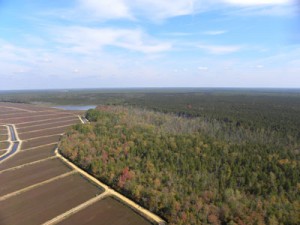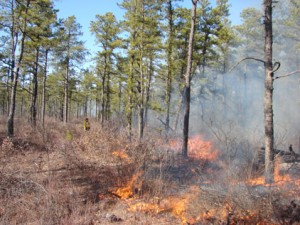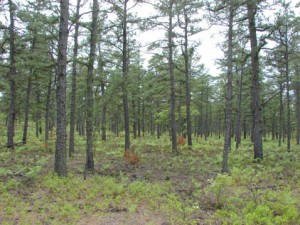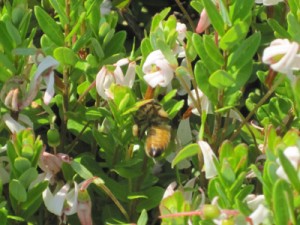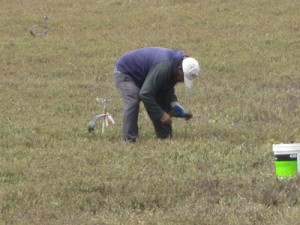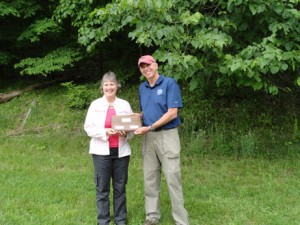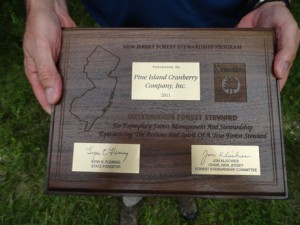Last week, Pine Island Cranberry was proud to welcome some of the members and staff of New Jersey Audubon for a tour of the harvest and some of the selected sites for one of our favorite projects: the quail restoration initiative. Bobwhite quail have almost vanished from the Pine Barrens, and Pine Island, along with NJ Audubon and Bob Williams of Pine Creek Forestry, hope to bring them back. According to NJ Audubon: “Northern Bobwhite, once a staple of the New Jersey countryside and common enough to be a game bird in the state, has all but disappeared. According to the Christmas Bird Count and Breeding Bird Survey data, the bird has suffered one of the most severe population declines of any North American bird: a population decline of 82% in the last forty years. This is primarily due to a loss of habitat from development, change in farming practices, change in habitat due to a lack of disturbance, and an overall loss of young forest habitat.” Over the course of three years, they say, “…approximately 240 wild birds will be captured on private land in Georgia, and transferred to the core of the pinelands where they will be fitted with radio collars, released, and monitored. The goal is to establish a self-sustaining population on this magnificent property.”
Eric Stiles, President/CEO of NJ Audubon, and John Parke, his Stewardship Project Director, are both very excited: “This project makes us feel that we’ve been bringing everything we’ve been promoting: sustainability, agriculture, habitat. This is all about the private sector taking it upon themselves to do great work and show how it’s supposed to be done out there on the landscape. This is all being done by agriculture: how they deal with water and disease and production, straight up to how they’re dealing with the forest. We need to take into account the cultural, social, and economic aspect; if we don’t, we miss a lot of useful info from people who have been out there working on the land, and they’re the ones leading the charge. Pine Island Cranberry, and what they do, is such a big component of how this state is going to be able to proceed as far as sustainability and natural resource protection.”
The first item of business, of course, was going out to see the harvest on a picture-perfect day.
CEO Bill Haines was glad as always to explain the importance of water to our industry. “The key to this business is water,” he said. “The protection of our water supply has protected this business from the beginning. We have 1400 producing acres, but about 14,000 acres of land to protect our water supply, which sounds more impressive than it really is. Back in the day, no one wanted it, so if it was upstream, we bought it. And because we have all this land, we’ve always done prescribed burning. This is where we grew up; this is where we do business. It’s important to us in a business sense, yes, but it’s also important because it’s our home. That’s how this family was raised: if you have a resource, it’s your responsibility to take care of it.”
The group was off to Sim Place to see the targeted habitat and how Pine Island’s forestry and stewardship practices are helping make this happen. While seeing the harvest always has an impact, it was even better to see the reactions to some of the native plant growth flourishing on the land.
Ultimately, it’s not just about restoration or protection; it’s about doing the stewardship work for the long term. “It’s not only good work,” says Bill. “It’s also fun. This will show that you can successfully manage a business in the Pines that not only doesn’t damage the environment but enhances it. It’s good for business, but it’s also the right thing to do.”

